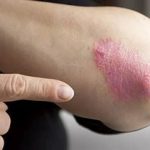
Most folks know they’d be healthier if they ate more plant-based foods, but only a quarter are willing to follow through and do it, a new study shows. Surveys reveal that Americans’ beliefs about eating more plants for health are often at odds with their daily dietary choices, researchers say. “U.S. consumers have favorable perceptions of foods and beverages that support human and environmental health, but that’s not translating into what they’re purchasing and consuming,” said lead researcher Katherine Consavage Stanley, a doctoral student in human nutrition, foods and exercise at Virginia Tech in Blacksburg. For the study, researchers looked at data from more than a decade of nationwide surveys gathered between 2012 and 2022 by the International Food Information Council, analyzing more than 1,000 participants’ responses. Across all the years, 73% of Americans said plant proteins were healthy, compared to 39% who said animal proteins were healthy. The percentage of Americans who follow a plant-rich dietary pattern more than doubled during the decade studied, rising from 12% to nearly 26%. At the same time, however, the percentage of people eating more red meat also rose, from 13% to 19%. Generation Z (born 1997-2012) and Millennials (1981-1996) were more likely to follow a plant-rich diet than Generation X (born 1965-1980) or Baby Boomers (1946-1964), results show. But about 25% of Generation Z and Millennials also… read on > read on >


















